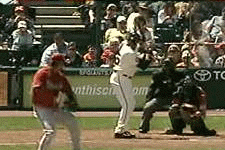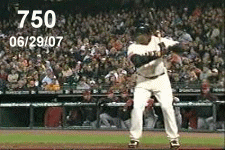Let's do that.
Get a bat and ball. Self toss.
1) Throw it up, hit it, while not letting your lead leg touch until after you "go".
2) Throw it up, hit it, "go" after you've weighted the front leg and established a front leg axis. With either a 50/50 weight distribution or 100% forward.
Which way can you hit it further?
You can learn a lot from self toss.
P.S. Tom's word "pivot point" is a much better way of describing the rotation than my word axis.
P.S.1 As to your "core" question. I see no contradiction. The core muscles unload the hips/torso around the rear hip joint pivot point.
Get a bat and ball. Self toss.
1) Throw it up, hit it, while not letting your lead leg touch until after you "go".
2) Throw it up, hit it, "go" after you've weighted the front leg and established a front leg axis. With either a 50/50 weight distribution or 100% forward.
Which way can you hit it further?
You can learn a lot from self toss.
P.S. Tom's word "pivot point" is a much better way of describing the rotation than my word axis.
P.S.1 As to your "core" question. I see no contradiction. The core muscles unload the hips/torso around the rear hip joint pivot point.










Comment